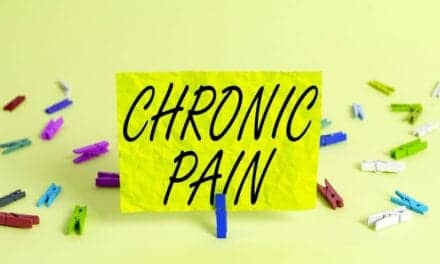The University of Oklahoma Health Sciences Center reports it recently received a $2.5 million federal grant to tailor methods of treating chronic pain to the older adult population – with an emphasis on decreasing the use of opioids – and to disseminate those best practices to primary care clinics across Oklahoma.
The grant, from the Agency for Healthcare Research and Quality, will allow physicians and researchers to concentrate solely on older adults, and to establish standards of pain management that prioritize non-opioid medications and treatments, University of Oklahoma note in a media release.
“The older population has a much different relationship with opioids than the younger population does. In the younger population, the No. 1 problem is typically misuse, while in the older population, the bigger problems are interactions between opioids and other medications and other health conditions, as well as a higher risk of falls.”
— Zsolt Nagykaldi, PhD, Director of Research for the Department of Family and Preventive Medicine in the OU College of Medicine
There are numerous reasons for limiting or avoiding opioid prescriptions in older adults, co-principal investigator Steven Crawford, MD, Senior Associate Dean for the OU College of Medicine, shares in the release. Metabolism slows as people age, which can increase the effects of opioids. Conditions like emphysema and sleep apnea complicate the use of opioids, and other medications may interact poorly with opioids. Opioids also cause constipation, which can affect the body’s systems and eventually lead to serious issues.
However, there are many alternatives to opioids. Non-opioid medications may be an option, although care must be exercised with anti-inflammatory drugs like ibuprofen, which can damage the kidneys and increase the risk of internal bleeding, among other complications, Crawford adds.
There are many non-pharmacologic possibilities, such as physical therapy, if patients are decreasing their opioid use slowly over time.
“It’s not easy to treat older adults with chronic pain, so this grant will allow us to help patients and their physicians to understand and have access to alternatives to opioids. It’s very important to have safe opioid prescribing practices and to make sure that patients understand the risks, but we have to think through other ways to manage pain.
“It’s not always possible to make someone totally pain-free, but we also don’t want to put someone at risk for a fall because they’re taking a medication that has a sedating effect. We want them to continue doing the activities that enrich their lives. We don’t want people to stop doing the things they enjoy because that can lead to social isolation and loneliness, which ultimately leads to poorer health. Regular physical activity is very important for managing chronic pain because pain gets worse if people sit for a long time
Lee Jennings, MD, Chief of the Section of Geriatrics, Department of Medicine, OU College of Medicine
Jennings is also director of the Oklahoma Healthy Aging Initiative (OHAI), which provides gentle exercise opportunities and falls prevention classes (including via Zoom) across Oklahoma. OHAI’s free programming will be emphasized as part of the overall program.
Because primary care clinics provide most of the care for older adults with chronic pain, the OU Health Sciences Center will be working with up to 50 clinics across Oklahoma. Community panels, comprised of both patients and clinicians, will provide insight into the needs specific to each area, the release continues.
“New medical guidelines, if they follow the natural course of things, can take years to become wedded into the practices of clinics. This type of program allows us to accelerate that process by working with clinics to improve the quality of life for their patients.”
— Steven Crawford, MD
[Source(s): University of Oklahoma, News Medical Life Sciences]
Related Content:
Don’t Feed Opioids to the Kids
Avoid Opioids for Sprains and Strains, Per Evidence Review
This is a Strong Predictor of Post-Joint Surgery Opioid Use





